Background: State Corporation "Roscosmos" and its work
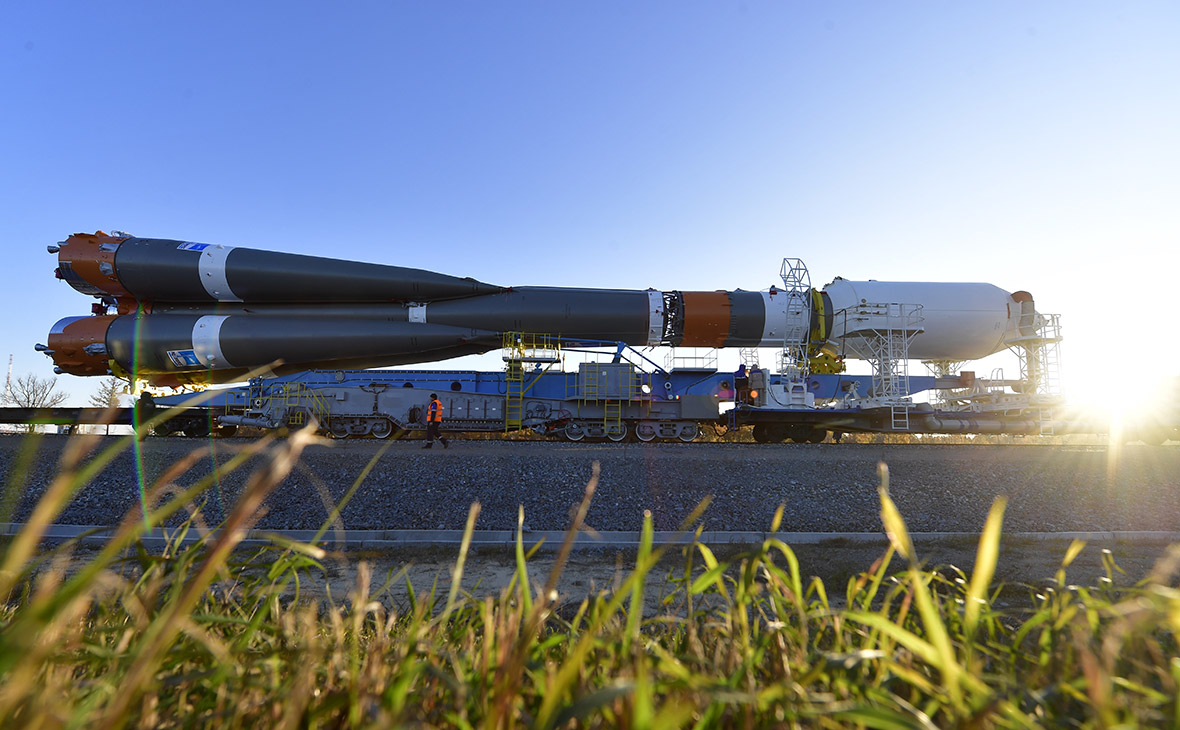
Roscosmos has a long history with many interesting moments. Not so long ago, the organization turned 26 years old. The official date of birth is February 25, 1992. A solid term for any organization. But what is Roscosmos? The next "Background" will tell about the history of the organization and some aspects of its work, including, for example, plans to create an orbital lunar station.
When did Roscosmos appear?
The state corporation originates in the USSR. In fact, Roscosmos has absorbed almost everything that remained from the space program of the country, which is no longer there.
In 1992, all this was transformed into the Russian Space Agency under the Government of the Russian Federation. The new organization was engaged in the implementation of state policy of Russia in space.
')
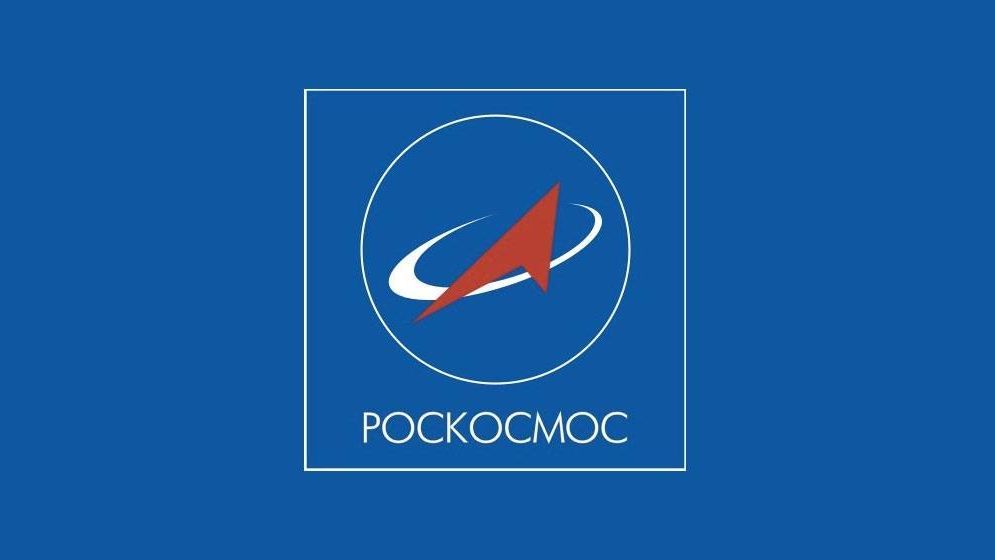
Then this organization was transformed into the Russian Space Agency. After a while, the Russian Aviation and Space Agency (Rosaviakosmos), which was established in 1999, appeared. Finally, Roskosmos (at that time, the Federal Space Agency) appeared in 2004. However, in 2014, the United Rocket and Space Corporation, which was headed by the former deputy director of "Roscosmos" Igor Komarov, was withdrawn from "Roskosmos".
Finally, in 2015, the Government of the Russian Federation decided to create a new state corporation, which would deal with the withdrawal of the Russian space program from the crisis. According to officials, the main features of the newly established organization were to be transparency, including management and financing schemes. In addition, they should have expanded the scope of Roscosmos activities.
As a result, the Roskosmos State Corporation for Space Activities became the successor of the USSR General Engineering Ministry, the Russian Space Agency, the Russian Aerospace Agency and the Federal Space Agency Roscosmos. The introduction of the Vostochny cosmodrome can be considered the beginning of the organization’s work.
What does Roscosmos do?
Functions of "Roscosmos":
- Development of plans for the exploration of near space and the implementation of these plans;
- Execution of government orders - for example, sending all sorts of cargo into space (including people, yes);
- Cooperation with international organizations is not an easy space, it is expensive to master it, and it is easier to do it together;
- Development and testing of various kinds of military equipment;
- Operation of the Baikonur cosmodrome and all the work carried out here, as well as the Vostochny cosmodrome.
Who directs the "Roscosmos"?
In 2015, Igor Komarov, who was in charge of the CCU since March 2014, took the post of head. In May of this year, by decree of Vladimir Putin, Dmitry Rogozin became Director General of the State Corporation for Space Activities Roscosmos. In addition, the governing body is the Supervisory Board of the corporation, in which 11 members, including Rogozin, Komarov Sergey Kiriyenko.
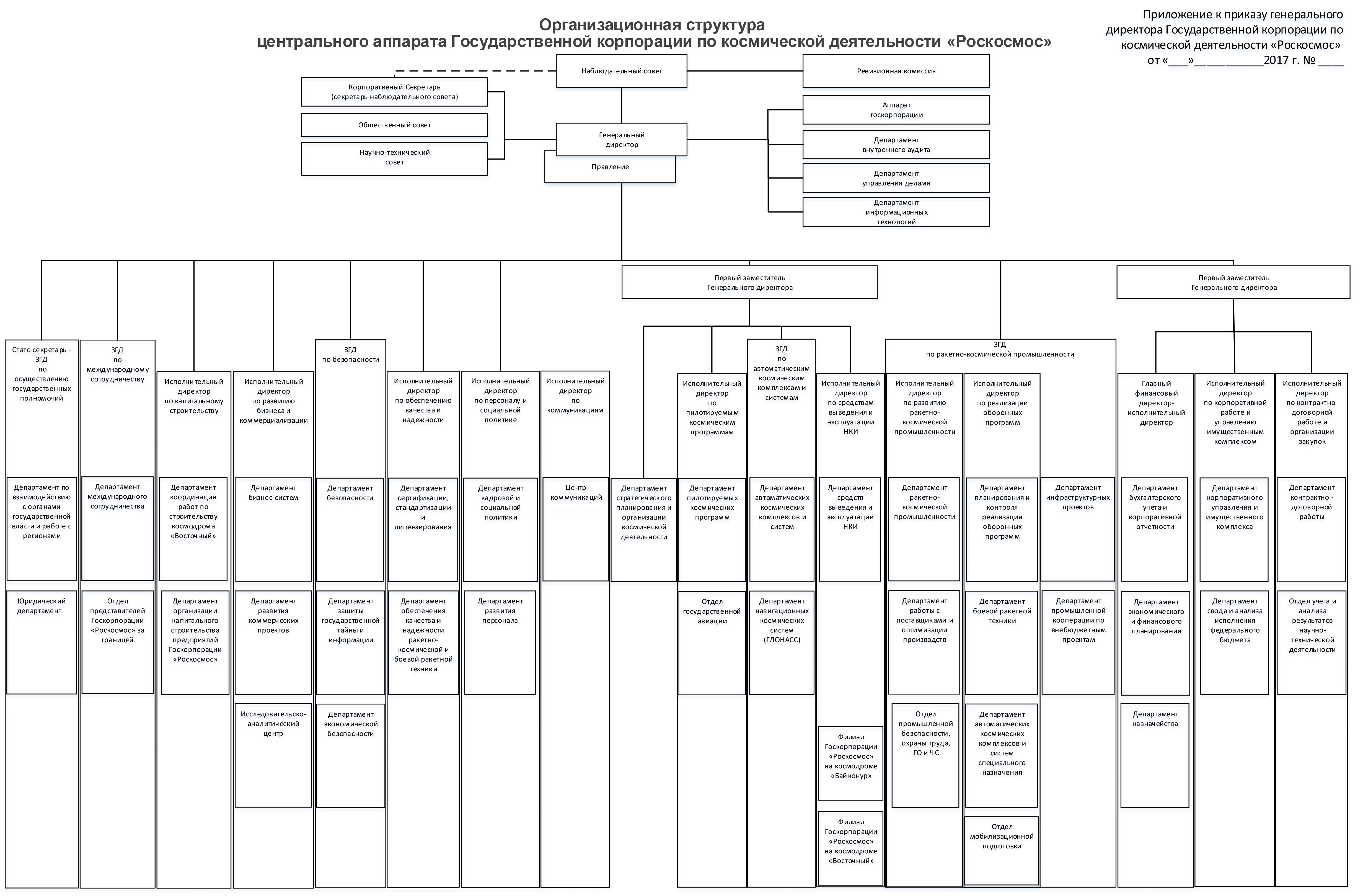
The organizational structure of the central office of the State Corporation for Space Activities "Roscosmos". Source - roskosmos.ru (when you click on the image, it will open in its original size)
The attitude of the new leader to cooperation with external partners can be judged by his statement: “First, we will definitely not conduct any negotiations to impose partners on the Americans ... Of course, the cooperation would be good here, but not at any cost, we’re definitely not let's go apprentices. "
How many cosmodromes Roscosmos has?
Now there are four - but some of the sites are managed by other organizations, Roscosmos has access to them.
Baikonur
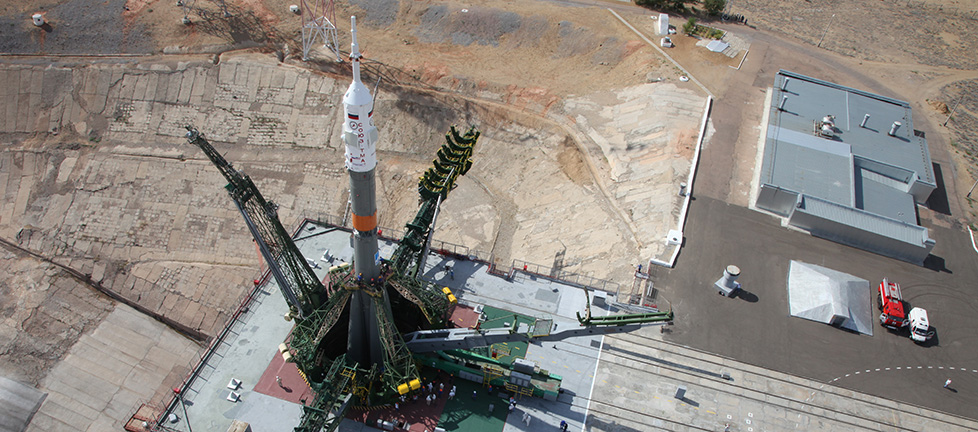
The Baikonur Cosmodrome is the first and largest cosmodrome in the world. It is located in Kazakhstan. The city of Baikonur and the cosmodrome form the complex of the same name, which is leased by Russia from Kazakhstan. The lease expires in 2050. In a year, the operation of the cosmodrome costs the Russian budget 9 billion rubles. Of these, 7.4 billion - rent, 1.5 billion - maintenance of objects of the spaceport. Plus, Russia is investing about 1.16 billion rubles a year in the budget of the city of Baikonur (this is a figure from 2012, there is no more precise data yet).
Oriental
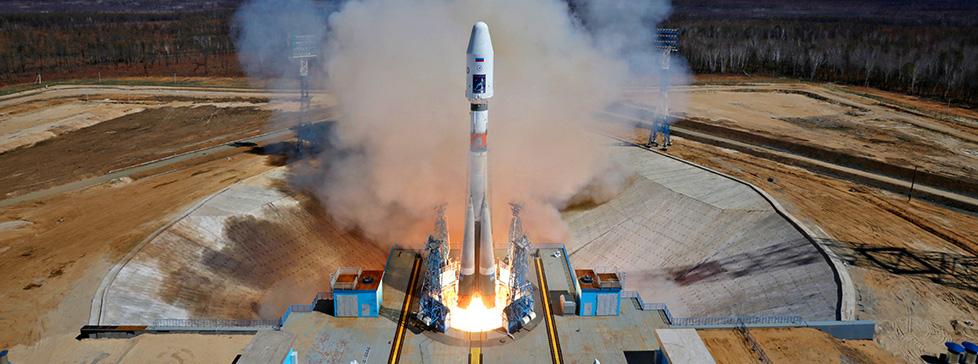
Civil spaceport, rebuilt from scratch. The order for its creation was signed in November 2007. It was created to provide independent access to space for Russia, to guarantee the implementation of space programs for various purposes, to reduce the cost of the Baikonur cosmodrome and to improve the overall social and economic situation in the Amur Region.
In 2016, the first successful launch with the launch of three artificial Earth satellites into orbit took place at the cosmodrome. Well, by 2021 it is planned to launch a manned ship "Federation". True, first in unmanned mode.
The spaceport cost the budget about 100 billion rubles. In total, it is planned to spend about 300 billion. The construction of the cosmodrome was accompanied (and accompanied) by loud corruption scandals. As far as can be judged, about 8 billion rubles were stolen - but these are only the thefts that are known.
Plesetsk
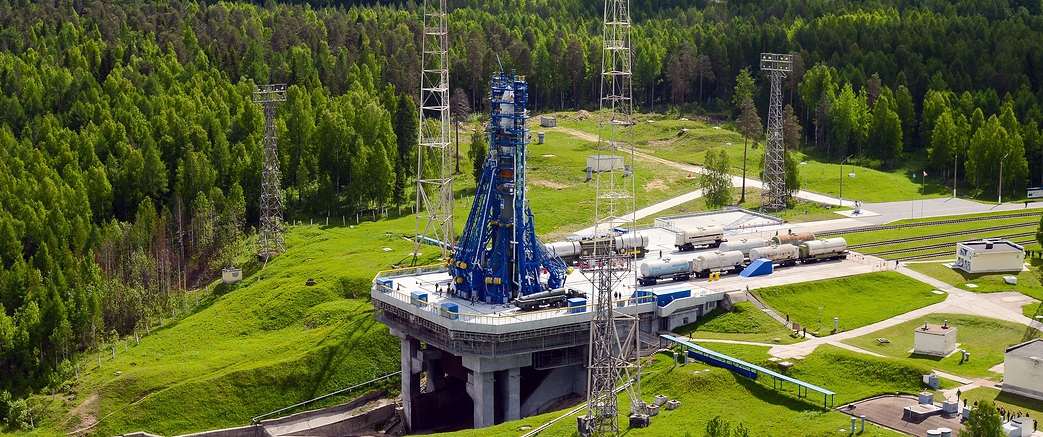
This is the northernmost cosmodrome, which is located in the Plesetsk district of the Arkhangelsk region of Russia. At the cosmodrome, carrier rockets of the light class Angara-1.2, Soyuz-2.1v, Rokot, the middle class Soyuz-2.1a, Soyuz-2.1b, and the heavy class Angara-A5 are operated. The hardware of the cosmodrome allows launching various spacecraft to all types of orbits, including the geostationary one.
Kuru
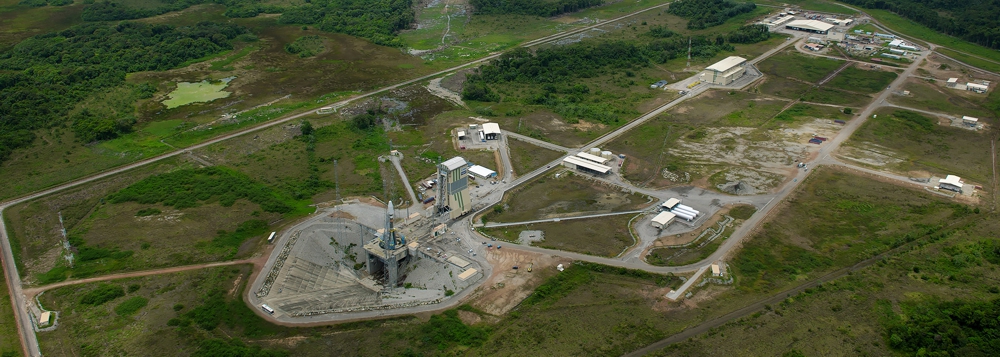
This is not a Russian cosmodrome, Roscosmos only leases facilities through Glavkosmos JSC. Nevertheless, the Roscosmos enterprises are preparing the Russian rocket and space technology and servicing ground-based technological equipment at the cosmodrome in Guyana.
Two thirds of the cosmodrome annual budget is funded by the European Space Agency. The volume of expenditures from the Russian budget is difficult to name - there is little data in the public domain.
Future plans
Roscosmos has an approved space program for 2016-2025. Within its framework it is planned to perform the following tasks:
- Development and maintenance of the orbital constellation;
- Providing flight tests "Angara" with a manned transport ship of a new generation;
- Providing launches to the ISS from the Vostochny space center in 2023;
- Development of a rocket engine on methane;
- The creation of a super-heavy rocket capable of delivering more than 100 tons of cargo into space;
- Study of the Sun in the framework of the project "Resonance";
- Fundamental space research, among them - the study of the moon (it is planned to send five spacecraft to the Earth satellite;
- Participation in the program "Exomars";
- Support of the ISS;
- Preservation of a place in the world market of space launches;
- Creating an inflatable module for the ISS.
About 1.5 trillion rubles is allocated for this program from the budget.
In addition, last year, NASA and Roskosmos signed a statement on the exploration and exploration of deep space. Both organizations will participate in the construction of the Deep Space Gateway base in the near-moon space. According to the preliminary plan, this base will become a platform for traveling to Mars for other space missions.
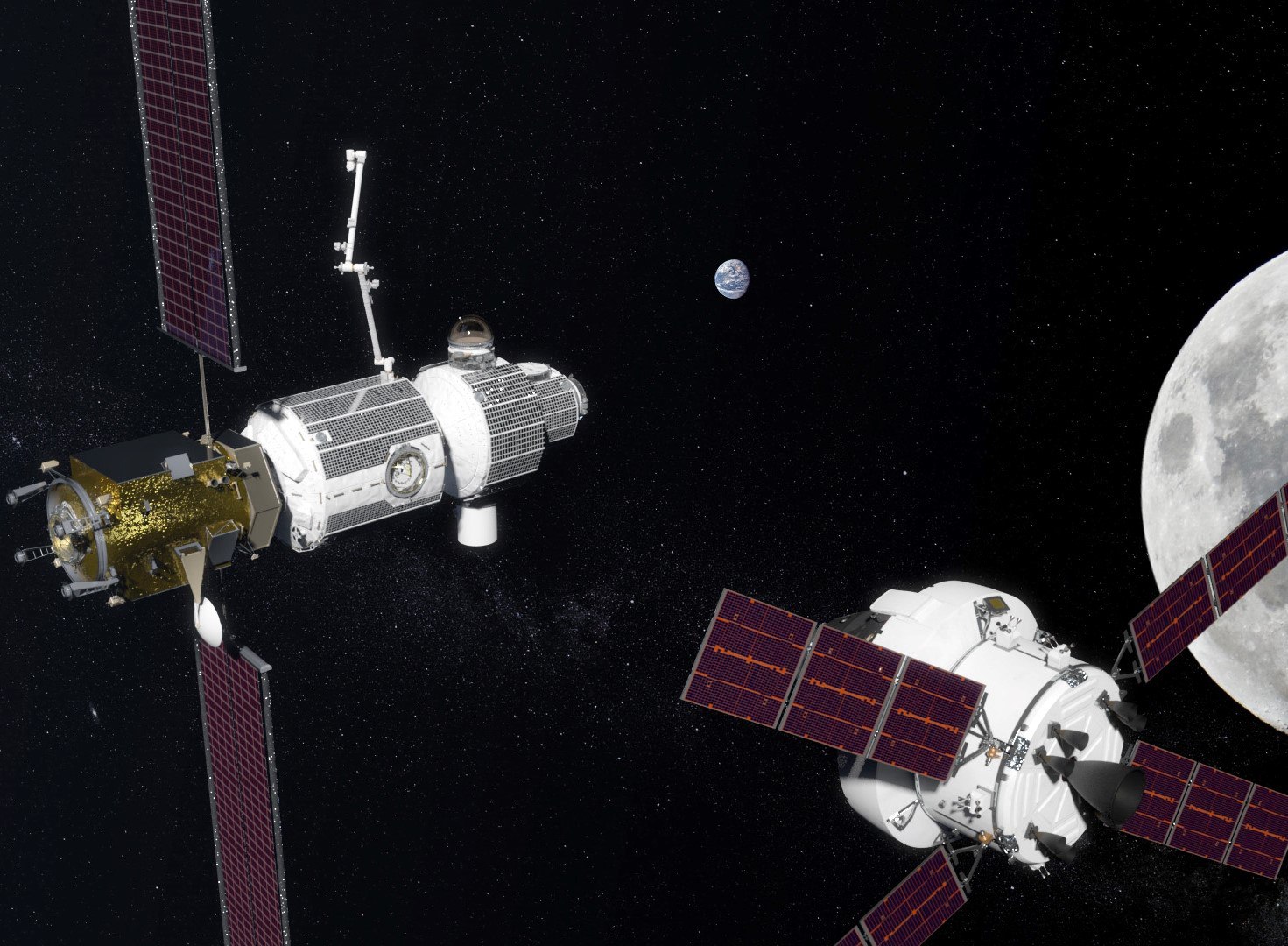
Problems of "Roskosmos"
In fact, there are so many of them that a full-fledged multi-page report is needed to uncover a complete picture. The leadership of Roscosmos recognizes the existence of problems. Last month, Acting Nikolai Sevastyanov, First Deputy General Director of Roscosmos State Corporation, called such industry problems:
- Systematic postponements.
- Increase the cost of projects.
- Insufficient reliability of equipment that damages the image.
The causes of problems (according to the management of the organization) are also three:
- Separated project management.
- Incorrect pricing. Prices are either too low or too high.
- Late quality control methodology.
In addition to these reasons, it is possible to single out the non-systemic work program of the organization. For example, plans to develop new launch vehicles were changed several times. It is not uncommon to plan to develop one rocket, then the program is abandoned halfway and the development of a second, different type begins. That is what happened with the project Rus-M. In addition, the Roscosmos program includes Angara, Soyuz-5, Energiya-5V missiles, a single-stage Corona rocket.
In the course of their work, various departments within the framework of Roscosmos have to agree, to constantly coordinate something. All this leads to a rise in the cost of all projects, dispersion of funds for third-party needs and deterioration in the quality of project implementation. The ex-employee of “Roscosmos” tells about a number of problems in his commentary on Habré.
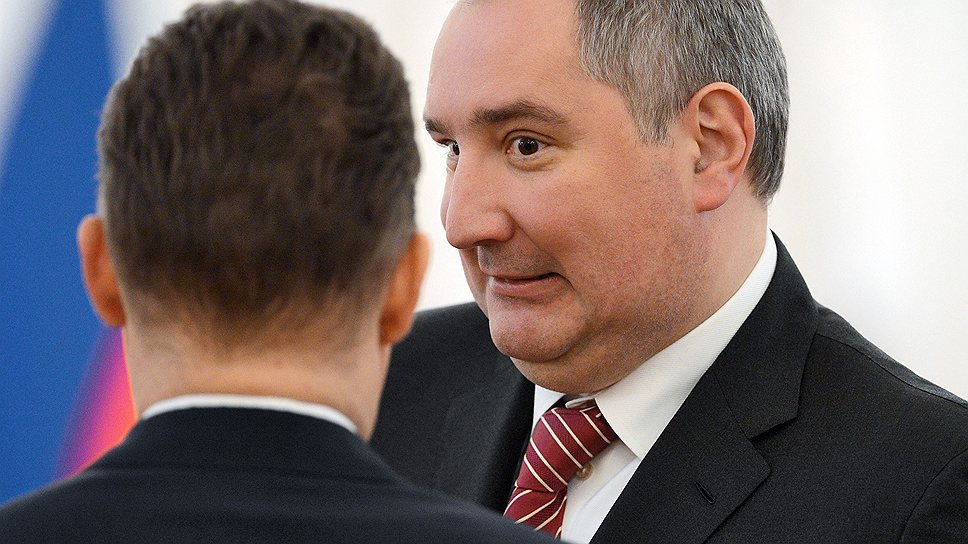
Now Roscosmos is still at a certain level in the market for launching goods and people into space. But this is largely due to the use of Soviet technology. There are innovations, but there are not many of them, and their implementation, for the reasons mentioned above, is troublesome and slow. Now in the United States and some other countries, private space exploration is booming, which will give odds to any state space program in terms of efficiency and budget. Unfortunately, Russia is now lagging behind a number of countries in terms of the development of the space sector, although earlier it was ahead of almost everyone.
Perhaps it was because of these problems that rumors appeared about the imminent reduction of the organization’s budget by 150 billion rubles in 2019-2021. According to experts, if this is really true, then the set goals and objectives of Roscosmos will be difficult to accomplish.
Source: https://habr.com/ru/post/417655/
All Articles